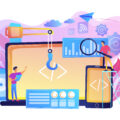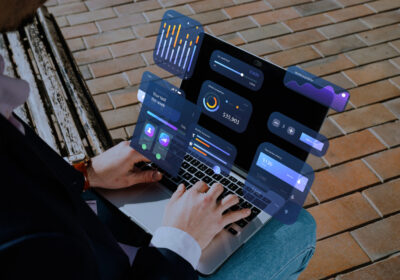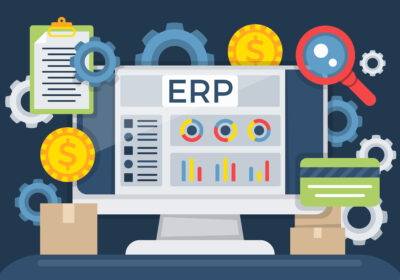Gamification and Gamified Learning are innovative strategies that have revolutionised the way we engage with technology. Particularly in the realm of Enterprise Resource Planning (ERP) systems, user engagement is crucial for maximising the value and efficiency of the system. This blog post will delve into these concepts, exploring their benefits, implementation strategies, and their future in ERP systems.
Gamification refers to the application of game-design elements in non-game contexts. It’s a powerful tool that motivates participation, engagement, and loyalty. Gamified Learning, on the other hand, is a pedagogical approach that incorporates game elements into learning environments. The goal is to improve user engagement, learning outcomes, and user satisfaction.
In the context of ERP systems, user engagement is paramount. ERP systems are comprehensive and complex, handling various business processes. Therefore, ensuring that users are fully engaged and effectively utilising the ERP system can significantly impact a business’s operational efficiency and bottom line.
Understanding Gamification
Gamification is more than just adding points, badges, and leaderboards to an existing process. It’s about leveraging the psychological predispositions that we have towards game-like experiences. These include our innate desires for competition, achievement, status, altruism, and community collaboration.
In a business process, gamification can be as simple as creating a progress bar for task completion or as complex as developing a full-fledged virtual environment where employees can interact and complete tasks. The key is to align the game mechanics with the business objectives and the user’s motivations.
The benefits of gamification in business processes are manifold. Firstly, it increases user engagement by making routine tasks more interesting and enjoyable. Secondly, it motivates users to perform better by instilling a sense of competition and achievement. Lastly, it facilitates better learning and retention of information, as people tend to remember more when they learn by doing.
Gamified Learning in ERP
Gamified Learning is an educational approach that applies game design elements to learning environments. The goal is to improve user engagement, learning outcomes, and user satisfaction. In the context of ERP systems, Gamified Learning can be a game-changer.
ERP systems are often perceived as complex and difficult to navigate. This can lead to resistance among users, hindering the full utilisation of the system. Gamified Learning can help overcome this challenge. By making the learning process more engaging and interactive, users are more likely to embrace the system and its functionalities.
For instance, a gamified ERP training program could involve a series of missions or challenges that users need to complete. These could be tied to various ERP tasks such as entering data, generating reports, or configuring settings. As users progress through the levels, they gain a deeper understanding of the ERP system, improving their efficiency and productivity.
The Psychology Behind Gamification and Learning
The effectiveness of Gamification and Gamified Learning can be attributed to several psychological principles. One of these is the ‘endowed progress effect’, which suggests that people are more likely to complete a task if they believe they’ve already made progress towards it. In a gamified system, this could be represented by a progress bar or a series of levels.
Another principle is the ‘Zeigarnik effect’, which states that people remember uncompleted tasks better than completed ones. In a gamified learning environment, this could be leveraged by leaving some challenges incomplete, prompting users to return to the system to finish them.
These psychological principles, when applied to ERP systems, can significantly improve user engagement and learning outcomes.
Implementing Gamification in your ERP
Implementing gamification in your ERP system is a strategic process that requires careful planning and execution. Here are some steps to guide you through this process:
- Identify your objectives: The first step is to identify what you want to achieve with gamification. This could be improving user engagement, increasing productivity, or enhancing learning outcomes.
- Understand your users: Understand the needs, motivations, and behaviours of your users. This will help you design a gamified system that resonates with them.
- Choose the right game mechanics: Choose game mechanics that align with your objectives and resonate with your users. These could include points, badges, leaderboards, challenges, levels, etc.
- Design the gamified system: Design the gamified system keeping in mind the user experience. The system should be easy to use, engaging, and rewarding.
- Implement the system: Implement the gamified system in your ERP. This could involve integrating a gamification platform with your ERP or building custom gamification features.
- Monitor and adjust: Monitor the performance of the gamified system and make necessary adjustments based on user feedback and performance metrics.
Conclusion
Gamification and Gamified Learning have the potential to transform the way users engage with ERP systems. By making the ERP experience more engaging and enjoyable, these strategies can improve user satisfaction, increase productivity, and ultimately, enhance the value of your ERP system.
As we look to the future, it’s clear that gamification and gamified learning will continue to play a pivotal role in ERP systems. So why wait? Explore how Verbat can help you implement effective gamification strategies in your ERP system for improved user engagement.
Remember, the success of your ERP system depends not just on its features and capabilities, but also on how well your users engage with it. And that’s where gamification and gamified learning come in.





